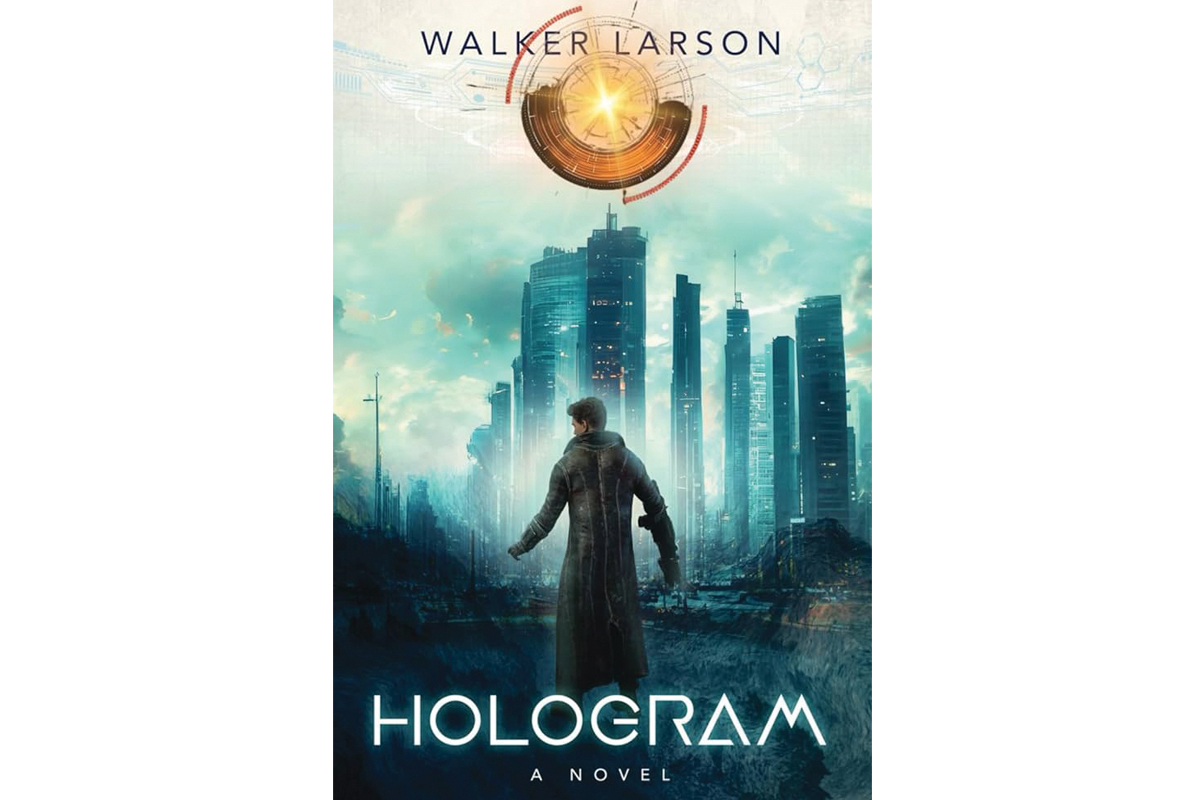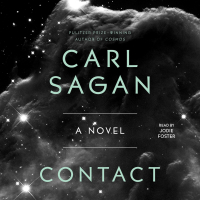‘Hologram’ is a warning about our age of deceit

“In the land of the blind,” goes the old saying, “the one-eyed man is king.”
In Walker Larson’s dystopian fantasy, “Hologram,” Aaron Larson Castillian turns this adage inside out.
Captured by his people’s hated enemies, the Voturans, the 18-year-old is not only allowed to live and to avoid enslavement, he’s swiftly given rewards and high military rank. In a country in which the capital city is decorated everywhere with holograms, and in a time when the projection of military holograms — of enemy troops, artillery, and aircraft — plays a major part in battlefield tactics, Aaron is the only known human who can distinguish between holograms and reality.
Consequently, the Voturan General Druxa takes Aaron under his wing, gives him luxurious quarters and bountiful food, makes him a colonel, and sets him to work using his special powers to bring about the defeat of Aaron’s own people, the Traurusians. We see the brutality of this ongoing war from the book’s very first chapters, when Voturan forces attack Fen, Aaron’s small home town, killing civilians left and right, and seizing the survivors to be sold into servitude. It is during this fighting that the Voturans realize that unlike all the other townspeople, Aaron doesn’t see the holograms beamed in as soldiers on one end of the village and runs right through these concocted images in his attempt to escape.
In his greed for the power Aaron can bring him in such battles, General Druxa fails to take into account the younger man’s lust for revenge and his desire to discover the fate of his family. Despite some violations of the customs of this new city in which he finds himself both a prisoner and an increasingly powerful asset, Aaron manages most of the time to conceal his hatred for his captors while attempting to track down and set free his mother, father, grandmother, sister and brother.
This brief summary of the plot also reveals the three themes that run through “Hologram.” First, there is Aaron’s indefatigable loyalty to family and friends. Even to the book’s final battle, he fights to secure the lives of those he loves.
Related Items
Next up is his thirst for revenge. Those around him, both the household slaves who become his friends and his two rescued siblings, are at times shocked by Aaron’s single-minded desire for bloody vengeance and try to convince him to change course. Even Kyla, the spirited young woman who despises her slavery and the Voturans as much as Aaron, and who eventually falls in love with him, is wary about his plans to bring down the corrupt government and the capital city of Chrysoberyl.
At times, driven by his hatred, Aaron behaves impetuously, offering confidences, as he does to Druxa’s daughter Antonia, hinting at his plans to spark a revolt in the city. Part of this rash behavior stems from his youth, part from his anger and obsession with destroying his enemies. Aaron is a reminder to those around him and to the readers of this novel that such a mania for retribution can bring on a madness that rarely plays out well.
Finally, “Hologram” is a sort of meditation on reality and illusion, and what happens when we mistake one for the other, which means the book should cause us to look at our own culture through the eyes of an Aaron. Whatever our political beliefs, most of us can surely agree that the government, social and corporate media, and politicians from all sides of the spectrum mix together information and misinformation until discerning truth becomes a never-ending struggle. Just as the citizens of Chrysoberyl can’t differentiate a hologrammatic building or animal from the real, so we in our society of funhouse mirrors have trouble separating fact and truth from fiction and falsehood.
“Hologram” is a solid story, well-written and entertaining, and suitable for teens for adults alike. It also reminds us that what we sometimes see in this world, or at least what others tell us to see, can in fact be deceptive. When we encounter situations, data and reports that somehow tell us something seems amiss, that’s when we need to put on the spectacles of skepticism, look into these matters and judge them for what they are and not for what someone would have us believe. As John F. Kennedy said in 1962 when addressing Voice for America, “A nation that is afraid to let its people judge the truth and falsehood in an open market is a nation that is afraid of its people.”
Near the end of “Hologram,” after a conversation with Kyla, Aaron thinks, ‘She was a sign to him, as so many others had been, that the real world is not made of shadowy illusions. Underneath it all, there is a brightness, an otherworldly brightness, putting the shadows to flight.’
Beneath the holograms of falsehood, beneath the artificial images and deceptions created today by AI, the real exists.
(Jeff Minick reviews books and has written four of his own: two novels, “Amanda Bell” and “Dust On Their Wings,” and two works of nonfiction, “Learning As I Go” and “Movies Make the Man.” This email address is being protected from spambots. You need JavaScript enabled to view it..)

















